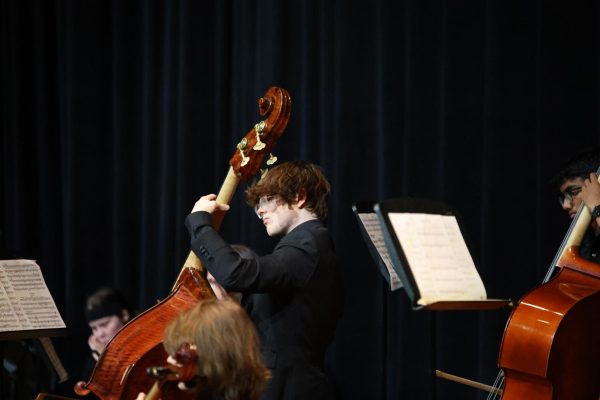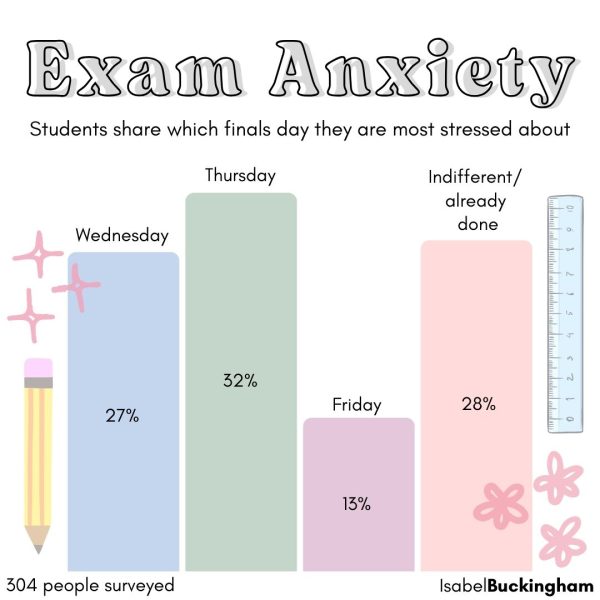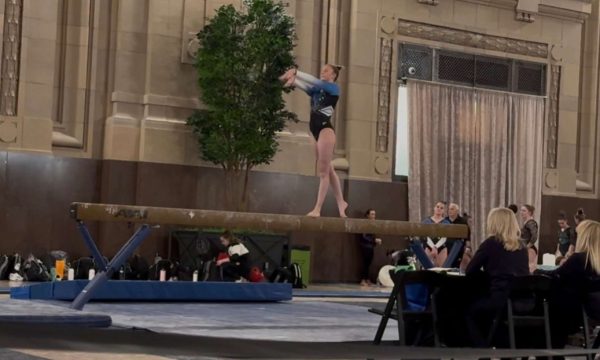Community describes the psychology behind fear
Community describes the psychology behind fear
For centuries, feeling fear was strictly to avoid life threatening situations and ensure the survival of the human species, according to psychologytoday.com. However, as proven by the abundance of horror movie trailers and haunted attractions around the Halloween season, fear is beginning to hold an entirely different purpose within society. The reason for this shift remains widely speculated.
Psychology teacher Dustin Leochner said the primary reason people enjoy scaring themselves comes from their sheltered lifestyles.
“We don’t have many things in our daily lives that give us that rush anymore because we live pretty safe lives in an industrialized country,” Leochner said. “Therefore, we go and [look for] opportunities to get that adrenaline and dopamine, that endocrine system spike. It’s kind of this ironic thing where we have thrill seeking now because 200 years ago you didn’t have to seek it — your natural environment gave you those instances.”
Psychology also suggests that horror movies are appealing to viewers due to the disconnect from reality, according to healthline.com. Although the human body might go into fight or flight mode, the frontal lobe of the brain, which gives the ability to think critically and make decisions, still knows it is physically safe. This allows the situation to be more pleasurable rather than horrifying.
“They’ve done studies where they’ll have students watch what they perceive to be fake carnage and what they perceive to be real carnage and the kids have a very negative response to the real movie but they don’t have the same negative response to the [other],” Leochner said. “We disassociate ourselves from it when we know it’s not real so people are more willing to watch it. We have that urge to watch it, but in real life we draw away from that.”
For senior Helene Bechtel, scary depictions in horror movies are not appealing in the slightest because of the reality of the situation.
“I don’t enjoy it because I think I’m invested too much,” Bechtel said. “I have a very big imagination, so I think I’m just more involved. I feel what the characters are feeling and can’t separate the character from real life.”
While Leochner said viewers tend to feel relief or satisfaction at the conclusion of a horror film due to a moral resolution of the evil being overcome, Bechtel said she finds herself unable to shake the movie and replays scenes in her mind.
“I think about it over and over again and my mind wanders to ‘could this happen in real life?’ and I imagine myself in that situation,” Bechtel said.
However, for junior Marie Oddo, the experience can be described as exhilarating.
“They are addictive because of the chemicals your brain releases. You want more of that thrill,” Oddo said. “I feel like I probably shouldn’t and I don’t know how else to explain it.”
Around Halloween time, like many others, Oddo frequents haunted houses to get a more intense adrenaline rush. She has been to the haunted houses at Worlds of Fun and West Bottoms multiple times.
“I like haunted houses just because I’m actually there and living it; it’s more of an interactive scare,” Oddo said.
Some of the most popular haunted attractions for members of the community around Halloween time are The Edge of Hell, The Beast and Macabre Cinema in West Bottoms that bring in more than 100,000 people per year according to the current owner of the haunted houses in West Bottoms, Amber Arnett Bequeaith. Bequeaith said the business has been a large part of her life since the age of 5, started by her grandmother and was passed down through her family.
“The thing most people don’t realize is that The Edge of Hell is the oldest commercial haunted attraction in the United States that originated a whole industry,” Bequeaith said. “Now, there’s lots of haunted attractions across the country and I’m the national spokesperson for them.”
Although currently haunted houses exist nationwide, Bequeaith said the Beast is unlike any other due to its imaginative sets and themes. She said stepping into the attraction sends people into another world filled with uniquely terrifying characters and immersive stories that can’t be found in any horror movies.
“A lot of times when I go and see other haunted attractions a lot of them don’t have a lot of original ideas,” Bequeaith said. “They’re more of a Hollywood copycat of the horror movies and we just think all that is really silly.”
Bequeaith said there is a science behind how the house is set up in order to achieve the most terrifying results rather than just the physical element of costumed people jumping out at you. A lot of planning is involved behind the scenes.
“With the psychology, in order to really scare someone you have to be able to move their mind into another place through the attention to detail inside the scenes, and the touching of all your senses,” Bequeaith said. “We sometimes even infuse smells into the rooms. I’m always chuckling [when] people come out of Hell and they’re like ‘It was so hot in there.’ Yeah, we heat it. It’s called Hell, it’s hot.”
Bequeaith said by simply invoking these mechanisms in the body, even without people realizing it, the situation becomes even more real and terrifying.
“You bring your own adrenaline and reactions whether it’s sweating or heart pounding or breathing or not being able to breathe,” Bequeaith said.
Although these haunted attractions are traditional for many, the growing horror movie industry has impacted the way Bequeaith said she and others run their businesses.
“Our job has become much harder because of movie special effects and so [the younger generation] becomes a little bit desensitized,” Bequeaith said. “We definitely have had to completely get on the bandwagon of the technology element in order to compete.”
Bequeaith said they use computer-programmed animatronics timed to the last millisecond by people breaking a laser, in addition to the live actors that roam the floors to scare guests. She said she still believes that the horror movies are dull in comparison to the effect of a haunted attraction such as her own.
“For instance, Macabre Cinema is a haunted 1930s movie theater where you are watching the horror movie on the screen but then you pass through a slit and you’re trapped inside the movie sets, so it’s kind of like you become the victim,” Bequeaith said. “You’re living that movie set. That’s what makes it more terrifying, that you’re inside there rather than just sitting at home on your couch with your popcorn.”




